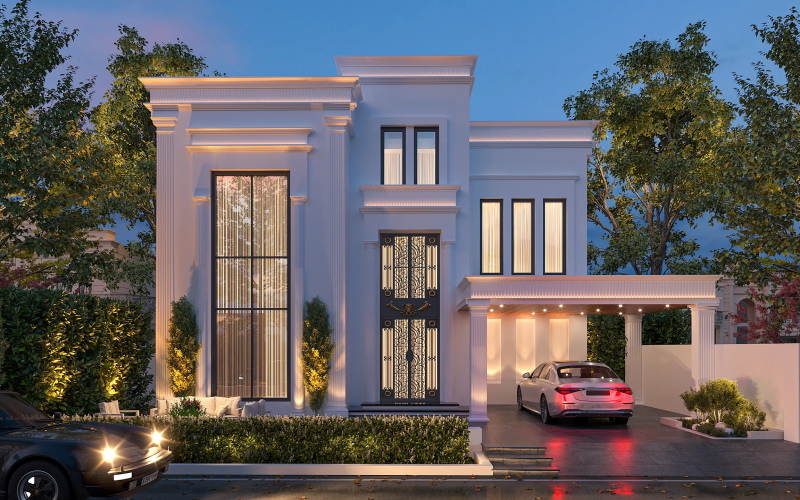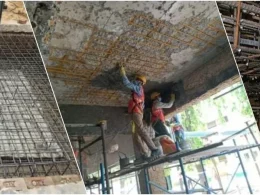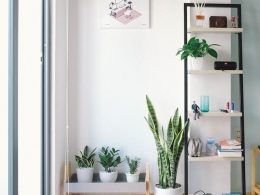Building a house is not just about walls, roofs, and floors. It’s about creating a space that matches your lifestyle, taste, and comfort. But did you know that planning your interior design at the early stage of your project can actually save you a lot of money? Most homeowners in Pakistan think of interior work only after the structure is complete — this is a mistake that can lead to high costs and poor use of space.
In this blog, we will explain why early interior planning is important, how it connects with architectural design and construction, and how it helps you avoid unnecessary expenses. This guide is written in easy English using simple terms familiar in Pakistan, so you can fully understand the value of planning ahead.
Why Interior Design Should Start Early?
Most people in Pakistan first focus on naqsha (architectural drawing) and structure. They call an interior designer much later — sometimes after paintwork is done. By then, it becomes too late to make basic changes without spending more money.
Here’s why interior design should be part of the planning phase:
- Saves Money on Changes Later
If you finalise furniture layout early, the electrician can fix plug points accordingly. If not, you may have to break walls to shift wiring later — which costs extra. - Better Use of Space
Interior designers help use every inch of your house properly. In cities like Lahore, Karachi, and Islamabad where plot sizes are limited, space planning is very important. - Helps Architect and Engineer Work Better
When interior planning is shared with the architect early, they can adjust wall sizes, door locations, and room shapes. This avoids future conflicts. - Keeps Budget in Control
With early planning, you know exactly what materials, tiles, lights, or furniture to buy — reducing random or repeat purchases. - Matches Local Lifestyle
In Pakistani homes, joint family systems, separate drawing rooms, prayer areas, and female-only zones are common. Early planning helps include all such needs without extra construction cost.
How Interior Planning Links with Architectural Design
Architecture and interior design are not separate. They are two sides of the same coin. The layout made by the architect is the foundation, but how you use that space is decided by the interior plan.
Let’s say your architect has placed a window on a certain wall. But later you want to place your bed there — that window will now become a problem. Or your wardrobe is 6 feet wide but the wall is only 5 feet — this kind of mistake happens when interior design is not planned from the start.
That’s why famous architectural services always involve interior planning in their early design stages. This teamwork ensures your house not only looks good but also works well.
How It Affects Construction Costs
Many small decisions taken early can avoid big costs later. Here are some examples:
- Flooring Levels: If your dressing area needs a wooden floor and rest of the room has tiles, the level must be adjusted early. Otherwise, later cutting and filling will cost more.
- False Ceiling and Light Fixtures: If you want a ceiling design or chandelier, the beam height must be set accordingly. Changing this after roof slab is cast is very difficult and expensive.
- Tile Layout in Bathrooms and Kitchens: Interior planning helps decide wall niches, shower partitions, and vanity units. These must be done before plumbing lines are fixed.
- Almirah and Storage Planning: Wardrobe depth, height, and location should be finalised before wall plastering, or you’ll end up wasting space or having bulky furniture.
- AC and Ventilation Points: Ducts, drainpipes and cutouts must be built in the slab. If you skip early planning, breaking concrete later damages structure and increases cost.
This is why the top interior design services always suggest starting the interior layout before or alongside architecture drawings.
Common Mistakes That Increase Cost
Many people in Pakistan delay interior planning due to these reasons:
- They think it’s only decoration and can be done later
- They want to save money by skipping the interior designer
- They follow someone else’s plan (naqal) without thinking about their own family needs
- They don’t make a budget or list of requirements beforehand
As a result, once construction finishes, they face:
- Wiring in the wrong places
- Low ceilings or wrong beam height
- Doors and windows blocking furniture placement
- No space left for cupboards or extra furniture
- Buying extra lights, tiles, or furniture to “adjust” the flaws
Role of a Good Interior Designer
A professional interior designer brings expertise in:
- Space efficiency
- Colour harmony
- Light management
- Budget planning
- Lifestyle mapping
The top interior design services in Pakistan often collaborate with architects during design phase. This team effort helps in creating a house that feels complete from day one — without costly fixes.
Things to Finalise Before Starting Grey Structure
Here’s a list of interior elements to lock before starting grey structure (raw construction):
- Furniture layout
- Kitchen and bathroom design
- Ceiling style and lighting type
- Air conditioning type and location
- Tile sizes and types
- Storage areas (cupboards, under-stairs, etc.)
- Paint colours and wall finishes
- Window treatments (curtains, blinds, etc.)
When these details are decided early, the grey structure supports your interior vision. This coordination also reduces waste and saves labour hours.
Local Considerations in Pakistani Homes
In Pakistan, every city and even every mohalla (neighbourhood) has its own style and building methods. Here are some local factors to consider:
- Weather: In places like Multan or Bahawalpur, planning insulation and cooling early saves long-term cost.
- Cultural Needs: Prayer rooms, servant quarters, separate entrances — all must be part of initial planning.
- Material Choices: Local tiles, bricks, or woods may affect design. Interior plans help you choose practical options.
- Security Concerns: Window sizes, locks, grills, and CCTV wiring should be pre-decided.
Final Words
Interior design is not just about looks — it’s about planning for comfort, function, and savings. When you plan it early with your architect and engineer, it becomes part of the main design, not an afterthought.
In Pakistan, where construction is often done with tight budgets and without proper guidance, early interior planning can make a big difference. From electrical points to kitchen shelves, every little thing you plan now can save you money later.
That’s why famous architectural services always recommend involving an professional interior designer from the beginning. It’s not an extra step — it’s the right way to build a home that fits your needs without breaking your budget.
By planning ahead, you’re not just building a house — you’re creating a home that feels right from the very first day.












